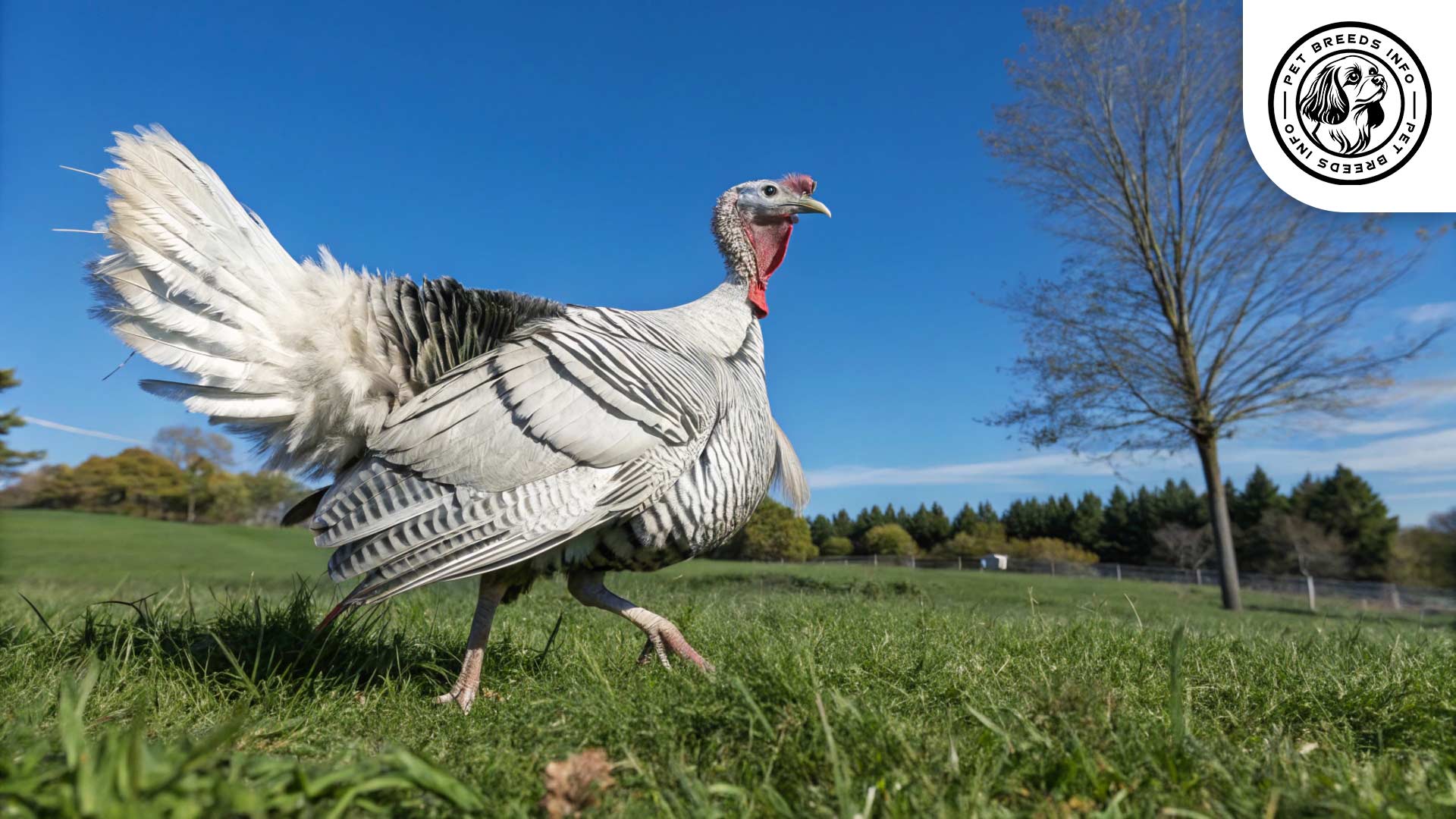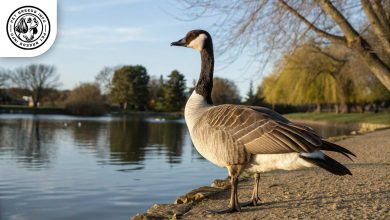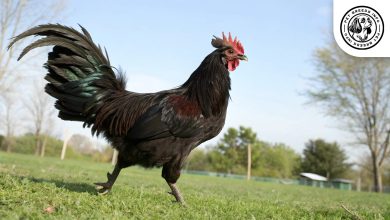Silver Narragansett Turkey Breed: Personality, Lifespan & Food
General Introduction of the Breed
The Silver Narragansett Turkey is a rare and unique variation of the traditional Narragansett Turkey. It originates from the United States, primarily developed in the New England region. This breed is a heritage turkey that dates back to colonial times and was selectively bred from native wild turkeys and domestic turkeys brought by European settlers.
Table of Contents
| Common Name | Silver Narragansett Turkey |
| Scientific Name | Meleagris gallopavo (Heritage breed) |
| Origin | United States (New England) |
| Size | Toms: 20–30 lb (9–13.6 kg), Hens: 12–16 lb (5.4–7.3 kg) |
| Lifespan | 5–10 years |
| Primary Purpose | Meat, ornamental, heritage preservation |
| Temperament | Friendly, alert, intelligent |
| Cold-Hardy | Yes – with proper shelter |
Physical Characteristics
The Silver Narragansett Turkey is a medium to large-sized bird, with males (toms) weighing around 20-30 pounds and females (hens) weighing approximately 12-16 pounds.
Its plumage is a striking silver-gray with black and white barring, giving it a unique appearance among turkey breeds.
The eyes are typically dark brown, and the head is featherless with a bluish hue. The snood and wattle are red, especially during the breeding season.
The tail is broad and fan-shaped, often displaying the characteristic barring seen in Narragansett Turkeys.
One of its distinctive traits is its beautiful silver color variation, making it a sought-after breed among turkey enthusiasts.
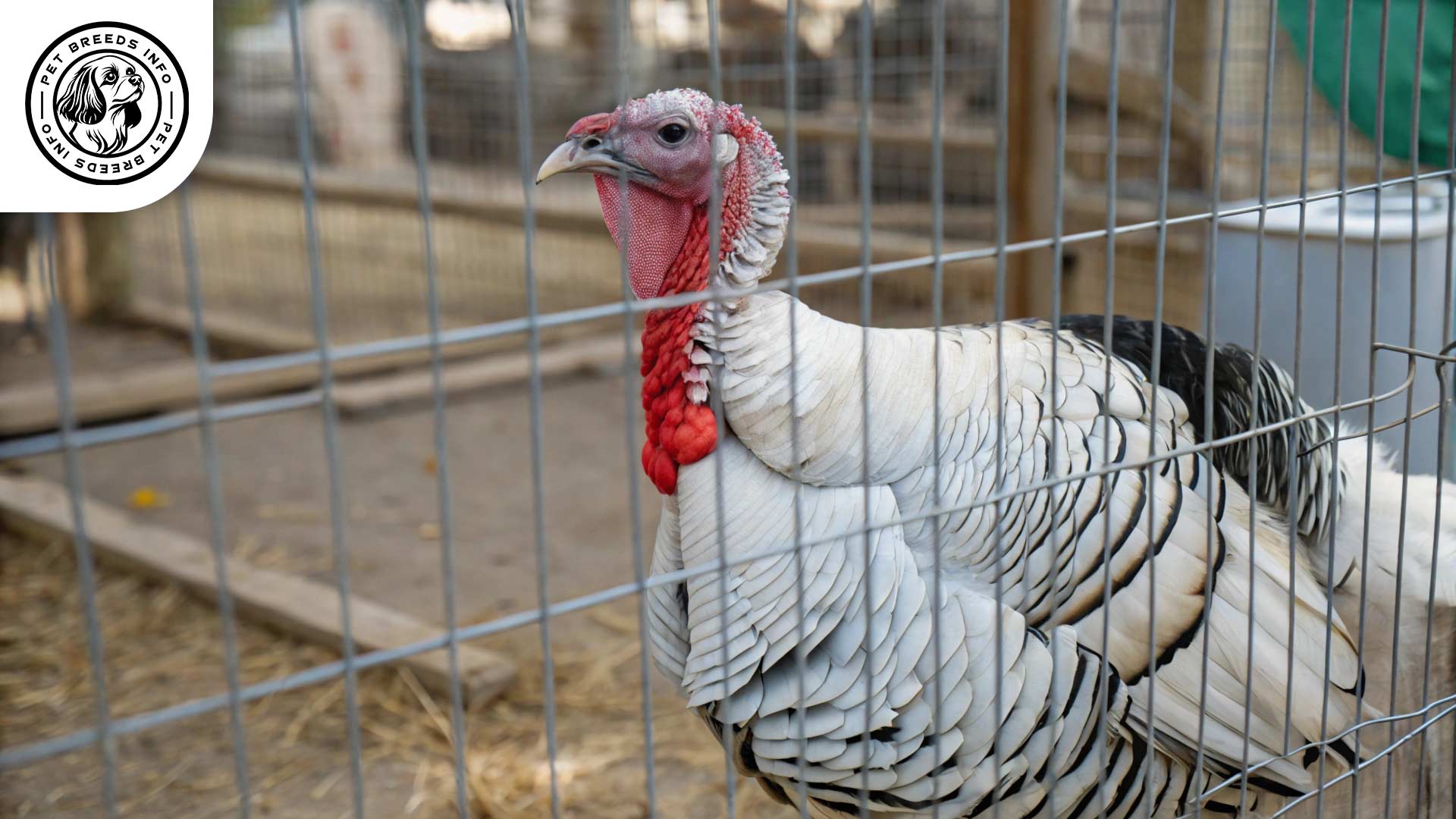
Personality and Temperament
The Silver Narragansett Turkey is known for its intelligence and alert nature. It is easy to train and can recognize its owner.
This breed is active and requires space to roam, making it better suited for farms or large backyards.
It is friendly and social, often forming strong bonds with humans and other farm animals.
While generally calm, males can become protective of their flock, especially during breeding seasons.
It displays minimal aggression and is considered a good choice for homesteaders and hobby farmers.
Read More: Muscovy Douck
Care and Maintenance Requirements
These turkeys require ample space to forage and roam freely. Confinement may lead to stress and reduced health.
A secure feeder and water supply should be maintained, as they drink large amounts of water daily.
Regular coop cleaning is necessary to prevent bacterial infections and maintain good hygiene.
Predator protection is essential, as turkeys can be vulnerable to foxes, raccoons, and birds of prey.
Routine health checks for external parasites and foot health should be conducted.
Diet and Nutrition
Silver Narragansett Turkeys thrive on a diet of high-protein turkey feed, especially during the early stages of growth.
They benefit from free-ranging, which allows them to consume grass, seeds, and small insects for added nutrition.
A mix of grains, vegetables, and formulated feed ensures balanced nutrition.
Avoid feeding moldy or spoiled grains, processed foods, and excessive treats that could lead to obesity.
Fresh water must be available at all times to keep them hydrated.
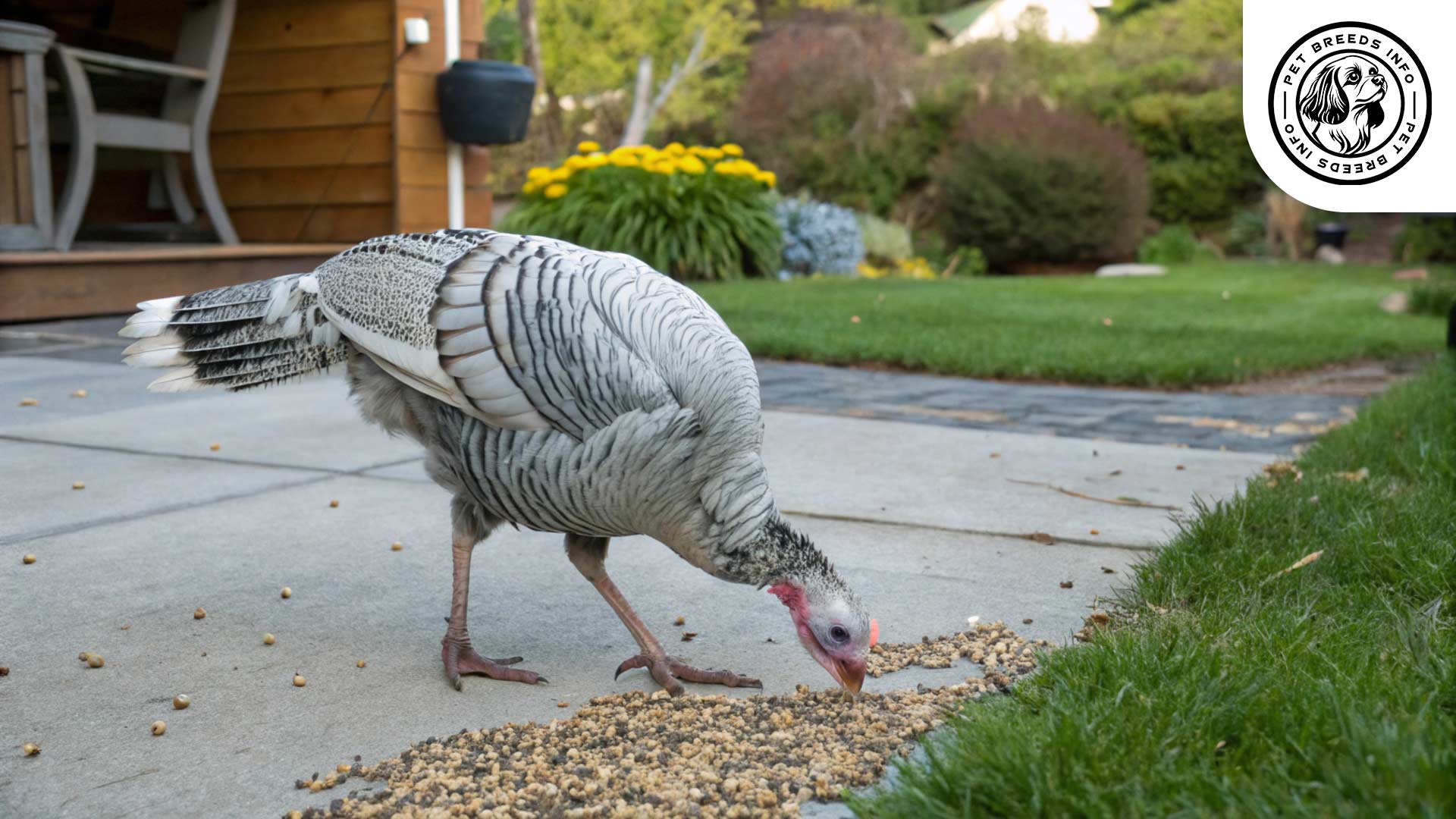
Health and Common Medical Issues
This breed is generally hardy but may be susceptible to common poultry diseases such as blackhead disease and respiratory infections.
Regular deworming and parasite control help maintain good health.
The average lifespan of a Silver Narragansett Turkey ranges from 5 to 10 years in well-maintained conditions.
Vaccinating against turkey diseases such as fowl pox and Newcastle disease is recommended.
Routine vet check-ups and observation for symptoms like lethargy or loss of appetite are crucial for early detection of illnesses.
Read More: Yorkshire Canary
Training and Behavior Management
Training is relatively easy since these turkeys are intelligent and can recognize their owners.
They respond well to consistent feeding times and familiar voices, making taming and interaction easier.
Early socialization with humans and other poultry ensures a docile temperament.
They can be trained to return to the coop at night with gentle guidance.
Positive reinforcement, including treats and calm handling, enhances their trust in the owner.
Interaction with Other Animals and Humans
They generally get along well with chickens, ducks, and other turkeys when raised together from a young age.
This breed is friendly and can develop a bond with humans if handled correctly.
May be a suitable addition to small farms and backyard homesteads due to their calm nature.
Males can become territorial during breeding season, so handling should be done carefully during this period.
Excellent for families looking for a sustainable meat source or ornamental pet bird.
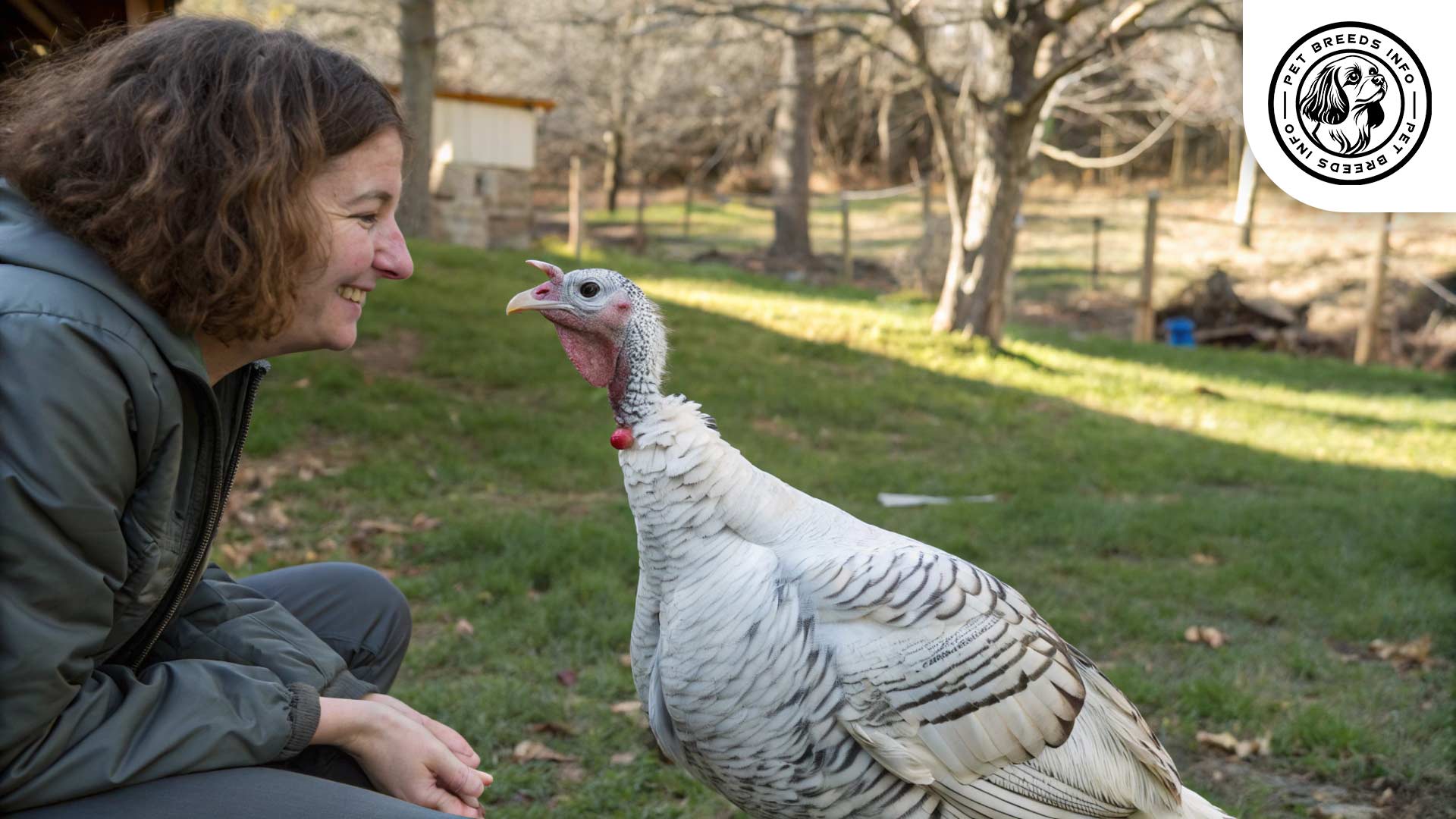
Price and Availability
The cost of purchasing a Silver Narragansett Turkey varies depending on location and breeder reputation. Prices typically range from $10-$20 per chick and higher for mature birds.
Heritage turkey hatcheries and local poultry farms are good sources for acquiring this breed.
Consider adopting from local poultry rescues or farms instead of purchasing.
Always check the health and quality of the birds before buying, ensuring they come from responsible breeders.
Read More: Mitred Conure Bird
Conclusion and Final Thoughts
The Silver Narragansett Turkey is an excellent choice for poultry enthusiasts and small farmers due to its striking appearance, friendly temperament, and heritage breed status.
Best suited for spacious environments where they can forage and express natural behaviors.
Potential owners should be ready for daily care, basic health management, and predator protection.
With the right care, these turkeys can thrive and provide both companionship and sustainable meat production.
FAQ
Are Silver Narragansett Turkeys good for beginners?
Yes, they’re friendly, easy to train, and low-maintenance with proper space.
Can they be kept with chickens?
Yes, if raised together—but monitor for bullying or disease crossover.
How much space do they need?
They need ample space to roam and forage—at least 25–30 square feet per bird outdoors.
What do they eat?
Primarily turkey feed with access to pasture, grains, greens, and insects.
Do they fly or wander far?
They can fly short distances—secure fencing and supervision are advised.
